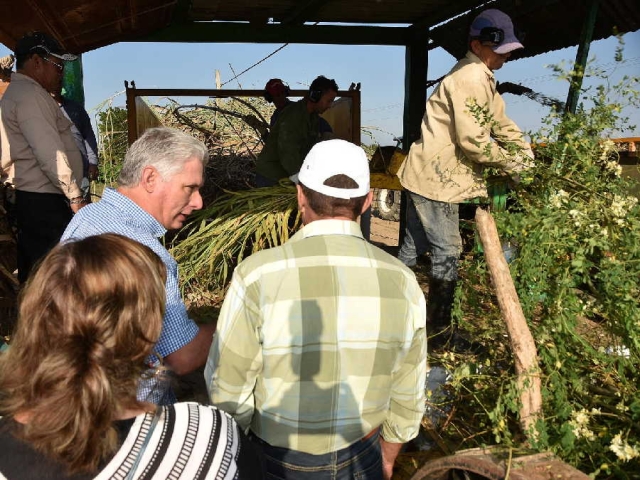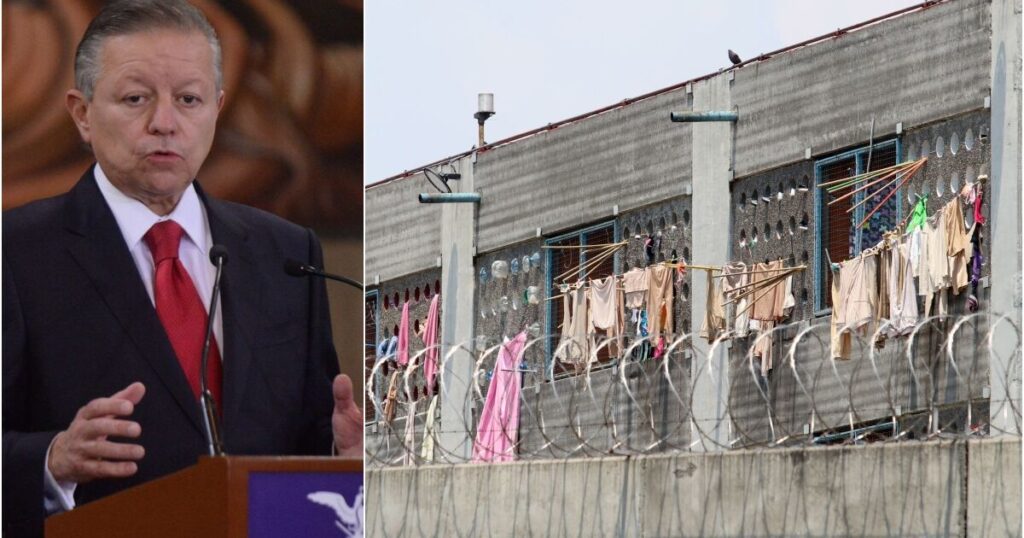MADRID, United States. — At last they have shown signs of life and some light has begun to be seen of what happened in 2021 in the Cuban economy. The report has just been published by the National Statistics Office (ONEI). Agricultural sector. Selected indicators January December 2021with which, in a way, the starting signal is given to the information on what happened in the Cuban economy during 2021.
The objective of this publication is to offer information on the behavior of the main indicators of non-sugarcane agriculture and livestock. The sources of information come from the data obtained from the National Statistical Information System (SIEN) through form 0336-08 (Selected agriculture indicators) and 0436-08, (Selected livestock indicators), those from the Ministry of Agriculture (MINAG): bulletins from the Union of National Poultry Combined Companies (UECAN), the Pork Production Group (GPP), the National Livestock Control Center (CENCOP), as well as information of the Directorate of Urban and Suburban Agriculture of the Institute for Fundamental Research in Tropical Agriculture (INIFAT).
The first thing to note is that the Cuban agricultural sector has registered in 2021 one of the worst years in recent years, very negative, in which not only the food needs of the population have been in suspense, but it has also had a downward drag effect on the growth of the economy as a whole.
Table 1 shows that the main productions of non-sugarcane agriculture have registered decreases in 2021, aggravating the shortage of supply and the difficulties of Cubans to eat every day.
Above all, the very unfavorable evolution of potatoes (-15.7%) or rice (-15.3%) stands out, which are fundamental components of the Cuban diet, although there were also very significant falls in production of citrus (-14.5%) or fruit trees (-10.8%). The production of tubers and vegetables has remained stable with respect to the previous year, thanks to the better performance of vegetables (0.9%), among which the tomato stands out (9.1%), the only product that stands out in the relation published. On the other hand, the production of tubers fell -1.4%, reflecting the sharp drop in potato production.
Secondly, if we look at the state or non-state origin of agricultural production, the failure of the state sector to produce food is observed, with an overall decrease of -4.1%, while the non-state sector, in the midst of large difficulties, has managed to increase supply by 0.6%, albeit insufficient.
Within the non-state sector, the production reached by the forms closest to the communist organization, such as the UBPCs or the CPAs, experienced sharp declines in the production of root vegetables and vegetables, -7.7% and -0.7% respectively, while the CCS and private managed to grow this production by 1.2%. Results that should lead the state to definitely withdraw from agricultural production and let it be led by the private sector.
In fact, in a year in which potato production fell sharply, as already mentioned, the CCS and private sector were the only ones that managed to raise the figures for this basic food product, with 3.1% more. For its part, the State showed its most absolute negligence towards potato production, registering nothing more and nothing less than a 20% drop in production, only surpassed by citrus fruits, with a 68.5% drop in production. state production. This result presents the aggravating circumstance that the State still maintains under its tutelage and ownership 37.9% of potato production, a food in which it has clearly failed as a producer. The CCS and private barely account for 5% of the total. Structural changes are more necessary than ever.
The State, as a producer, was only more dynamic than the non-state sector in two productions that registered strong global falls in 2021, such as corn (-7.2%) and beans (-7.1%), in which the State (which retains around 20% of production), with increases of 7.3% and 2.6%, respectively, had a more favorable behavior than the non-state sector, which registered decreases of -9.6% and -8.3% respectively.
But… Is the food situation in Cuba so negative? Do the data justify in a certain way the persistent scarcity that Cubans denounce in social networks?
Therefore, thirdly, to obtain an answer to these questions, it is more interesting to compare what happened in 2021 (after the disastrous Ordering Taskpost-COVID-19 pandemic) with the year 2019, the year before the start of the health crisis, in which there was still no talk of ordering anything and the effects of the pandemic had not been unleashed.
If this analysis is done, the data is overwhelming. Table 2 presents them ordered by the productions for which information is available for comparative purposes.
Of 5 million tons of tubers and vegetables in 2019, only 3.8 million were reached in 2021. The drops in the food supply have been very significant in beans (-52.4%), citrus (-47.6% ) or rice (-47%), products that were reduced by almost 50% in the course of two years. There were also decreases of more than 20% in viands and vegetables, especially a product such as potatoes (-25.8%), but also tomatoes (-21.3%) that were not spared from the decreases in this comparison with 2019 .
Only bananas or corn fell below 20%, but with very notable percentages, -17% and -13.5%, respectively.
Comparative data from 2021 with 2019, before the COVID-19 pandemic and the Ordering Task, confirm that Cubans must have experienced, over the course of two years, global reductions in food supply of more than 25% of household products. most requested agricultural consumption.

And if the outlook for agriculture was negative, with regard to livestock the situation has been much worse, as can be seen in Table 3, since here the collapse in supply has intensified in the course of a single year .

No production in the sector has registered a positive sign, that is, increases, and decreases have been the common note, with falls of -53.5% in pork (of great relevance in the Cuban diet), -32, 5% in sheep and goats and -20.8% in poultry meat.
Beef decreased by -13.5%, fresh milk by -16.3% and eggs by -10.5%. In agricultural production, the results obtained by the State have been negative, but, in general, they have shown less pronounced decreases than those obtained by non-state forms.
Specifically, these registered worse results in beef and pork, and even in poultry meat the State, with 6.2%, increased production compared to -18.8% of non-state production. However, the non-state forms registered a smaller decrease in sheep meat (-24.6%) than the State, which plummeted -72%. In fresh milk and eggs, the non-state sector also lags behind the state. Except for the difficulties of statistical comparison, the data for 2019 is even worse than in the case of agricultural production. Heads of cattle delivered for slaughter fell from 485.9 thousand to 392 thousand, -19%; those of pork went from 3,945 thousand to 1,937 thousand, here the decrease was -51%.
These data confirm that the Cuban agricultural sector has registered in 2021 one of the worst years in recent years, very negative, in which not only has it been compromised to meet the food needs of the population, but it has also had a downward drag on the growth of the economy as a whole. The measures adopted by the regime, the “famous 63”, have not served to boost agricultural production, and it is time to think about responsibilities and relief in the face of a disaster, on the other hand, announced.
According to the ONEI, the GDP variation rate in agriculture, livestock and fishing in the first three quarters of the year was -20.4% in the first, -6.7% in the second and -11.6% in in the third, the forecast that can be made, with the data available, is that the fourth quarter will not have been better, pointing to a new collapse in the sector which, according to our estimation, has placed the GDP figure in the primary sector with a global decrease in the exercise of a fall of -15%, with its negative impact on the population’s diet, impossible to compensate with imports due to the lack of foreign currency.
The Cuban agricultural sector is still in recession, a serious and deep recession, because it is unable to function under the communist social model and calls for urgent structural changes. 2021 has been a lost year.
OPINION ARTICLE
The opinions expressed in this article are the sole responsibility of the issuer and do not necessarily represent the opinion of CubaNet.
Receive information from CubaNet on your cell phone through WhatsApp. Send us a message with the word “CUBA” on the phone +1 (786) 316-2072, You can also subscribe to our electronic newsletter by giving click here.















